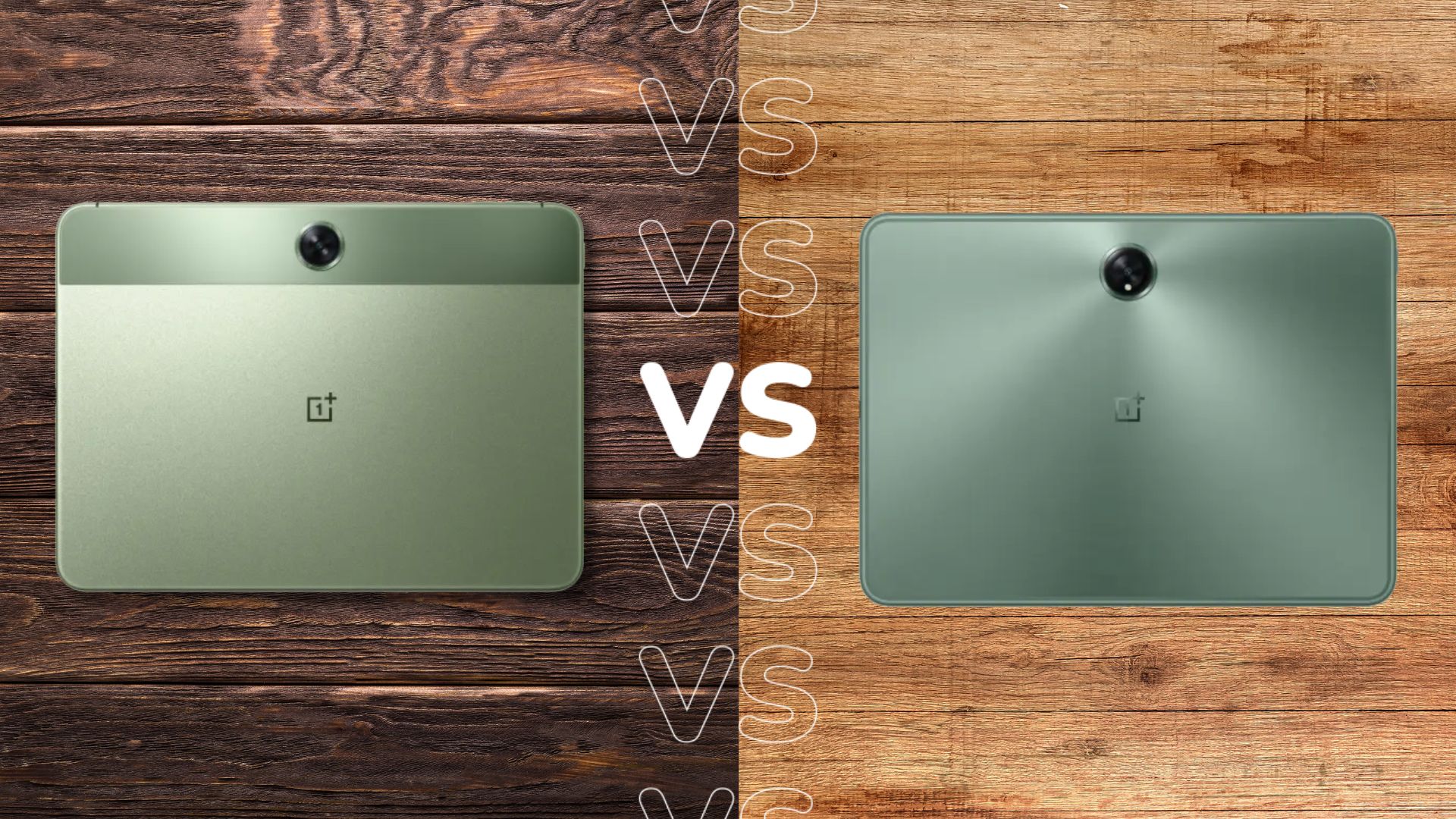Lenovo Legion Go vs Asus ROG Ally: Which handheld should you buy?

2023 involved a whole bunch of PC gaming handhelds launching, and we even got a refreshed Steam Deck. Two key Windows-flavoured players are Lenovo Legion Go and Asus ROG Ally. We’ve reviewed both, and here’s how they compare.
Handhelds are rife in the gaming world now, with Lenovo, Asus and Valve being the big brands already on the scene. But, the likes of Aya Neo and OneXPlayer are releasing plenty too. The MSI Claw is another new device set to arrive soon. That’s all before the imminent arrival of more Qualcomm Snapdragon-sporting handhelds later in the year. For now, the Legion Go and ROG Ally are two of the top options with plenty of difference. Here at Trusted Reviews, our experts have thoroughly tested both. Let’s dive in.
Design and Controls
Look to comparisons between the Asus ROG Ally and the Steam Deck, and you’ll see the design has a similar philosophy. A more traditional all-in-one handheld, but the Legion Go takes things in a more Nintendo Switch-like direction. The innovation allows you to remove the controllers from the Legion Go and play in a more wireless, as well as relaxed, fashion.

Apple TV+
The Home of Apple Originals. Enjoy star-studded, award-winning series, films, and more. Grab your 7 day free trial now.
- Apple
- 7-day free trial
- £8.99 p/m


However, the more immersive nature of the Legion Go does bring additional bulk, with the Lenovo coming in at 854g and 4.1cm thick. By comparion, the Asus ROG Ally is positively featherlight at 608g and 2.1cm thick. The difference means the Legion Go is a device that requires far more intention when it comes to taking it out and about, whereas the ROG Ally is far easier to just sling in your bag wherever you go. On the other hand, the additional bulk, as well as the feel, of the Lenovo makes it feel like a more premium device than the plasticky Asus.
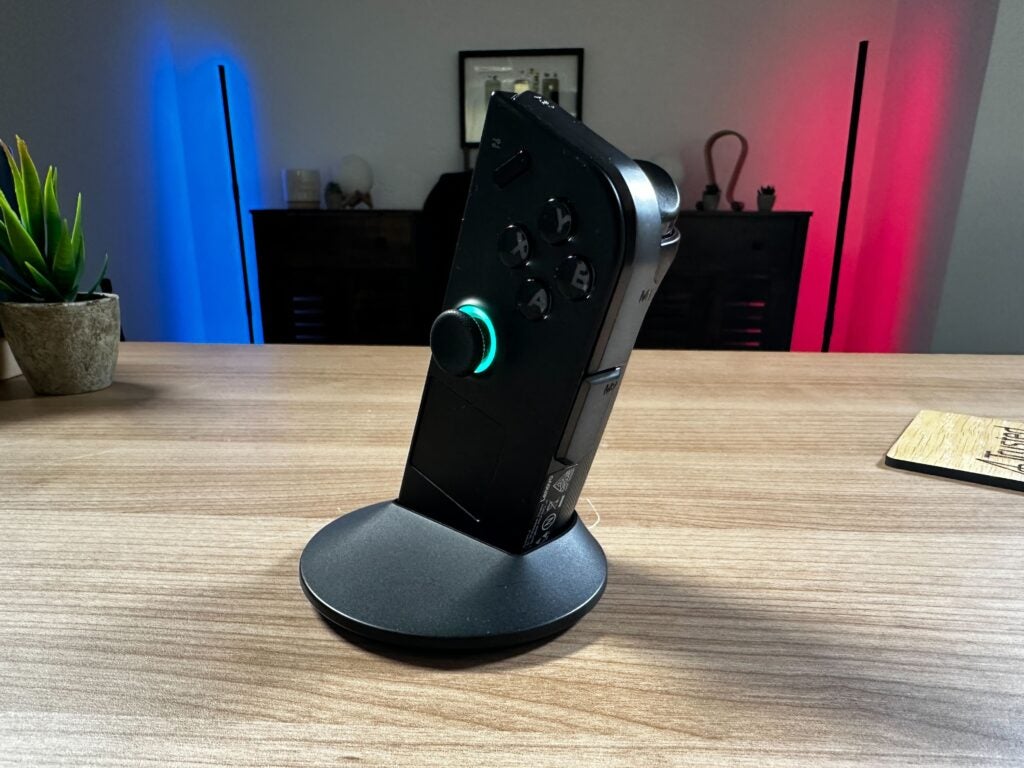
While the Lenovo may win on the adaptability of the controls, from how they detach to the wider set of customisation controls and the joystick-like FPS Mode, the Asus has the upper-hand for how the buttons feel to use. Like the Steam Deck, the Lenovo also offers a trackpad, which is handy for navigation Windows. The clicks and presses are all more satisfying than the Lenovo.
Display
Along with the controls, the display is one of the most significant points of differentation between the Lenovo Legion Go and Asus ROG Ally. Not only does the Lenovo offer a bigger display, coming in at 8.8-inch versus the 7-inch rival, but it offers up a higher 2560×1600 compared with the 1920×1080 of the Asus.
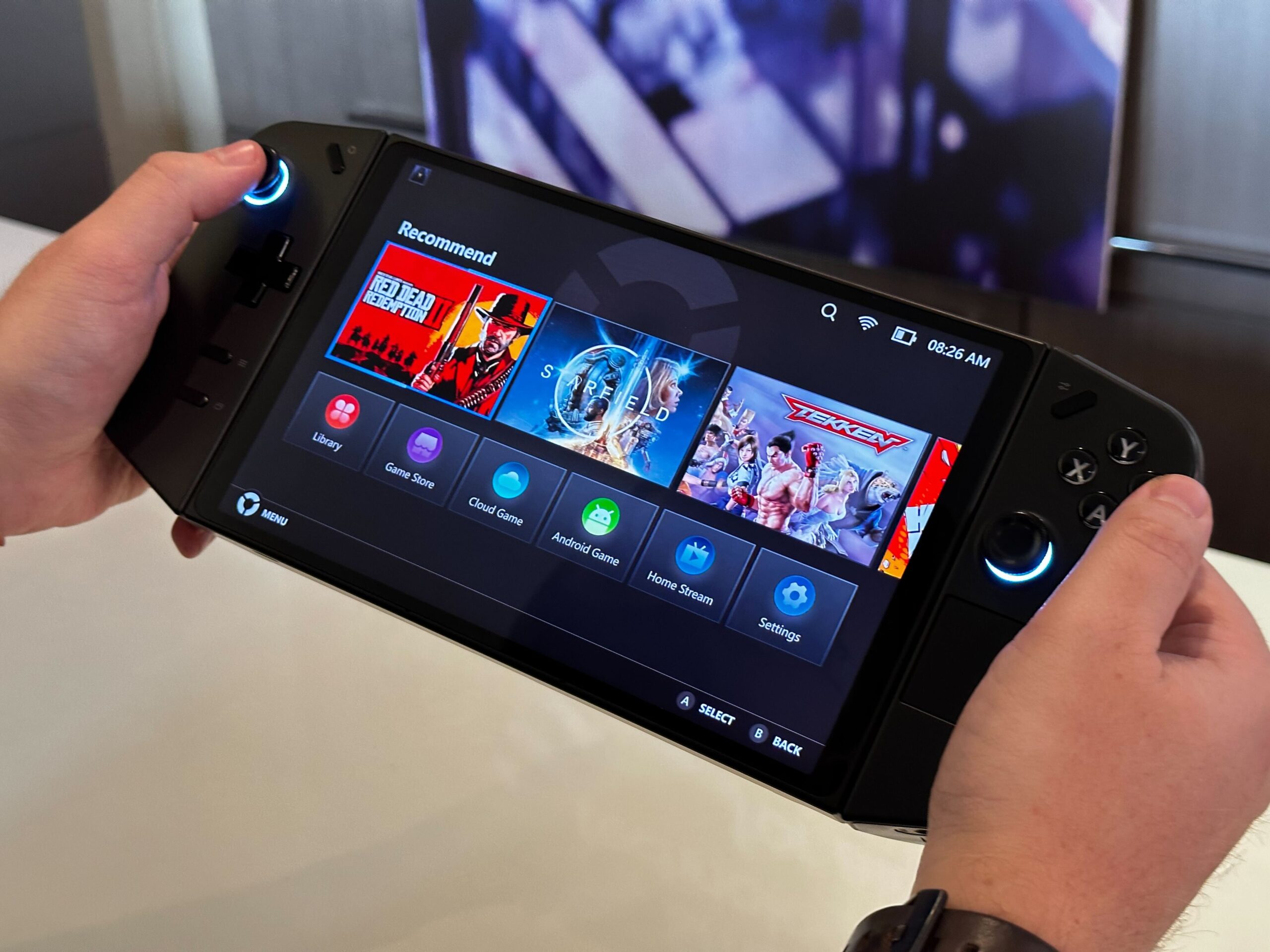
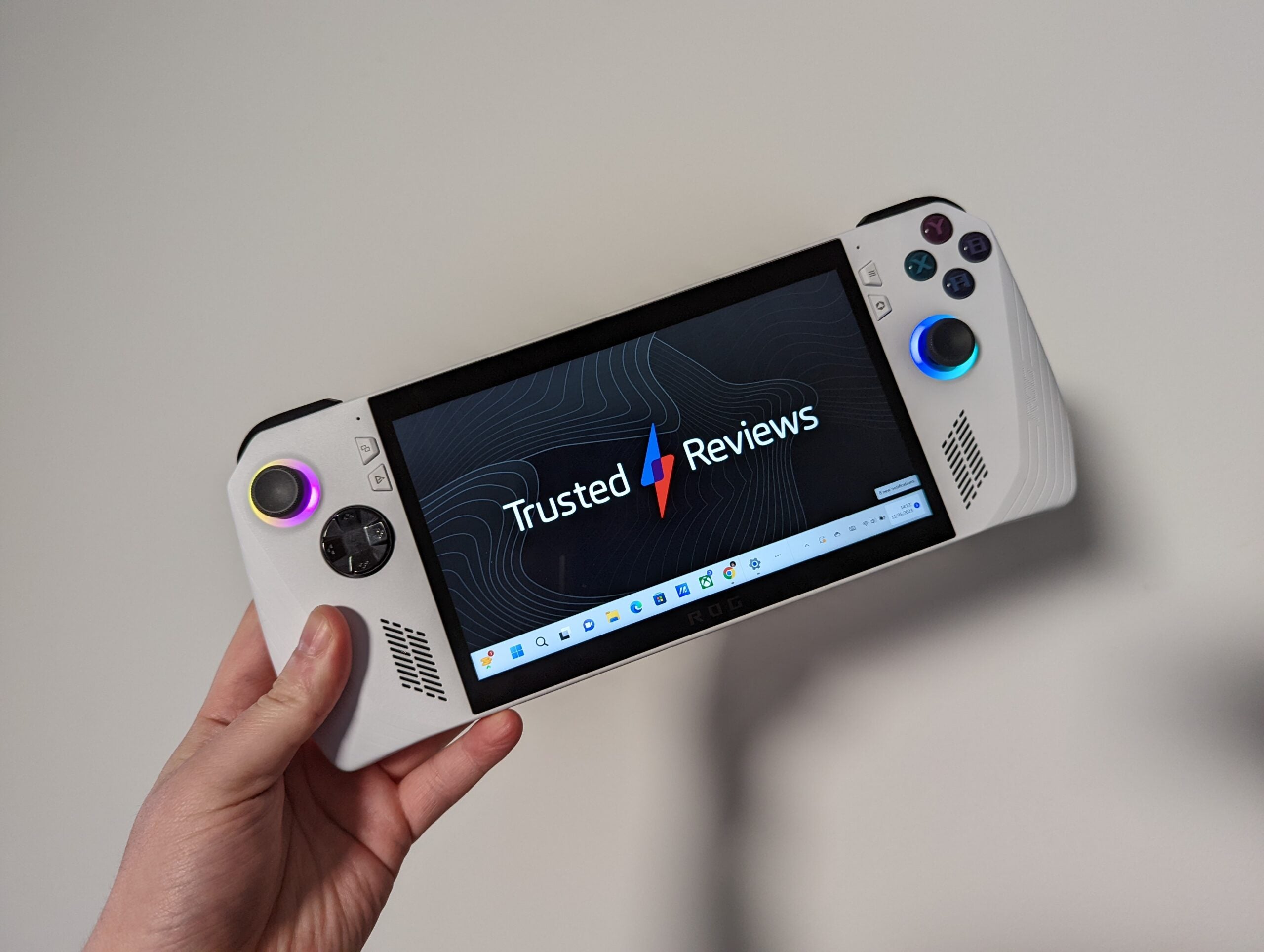
However, the importance of this is a bit of a mixed bag. The resolution may seem like a key factor, if you’re craving higher resolution gaming, but these machines simply aren’t capable of taking advantage of QHD+ across most titles. So, this shouldn’t be a key point in your decision. But, the difference in size is far more significant, with the Legion Go providing a remarkably immersive handheld experience.
Similar to the unfulfilled higher resolution, both displays offer 120Hz, but neither is able to reach such heights except in rather low-demand titles and with dwindling settings applied.
Performance and Software
With both models we tested sporting the AMD Ryzen Z1 Extreme and 8GB RAM, we found the performance of the Asus ROG Ally and Lenovo Legion Go to be extremely comparable. The only notable difference came when pushing these devices with higher demand settings and features in Cyberpunk 2077, where the Legion Go seem to fall slightly further behind. Both devices also impressed in how they rarely got uncomfortably hot and, even under intense load, fan noise didn’t become too much a distraction.
The difference in performance may be negligible but that can’t be said for the onboard software. Lenovo has its Legion Space to help guide you through the Windows 11 handheld experience while Asus offers its ROG Armoury Crate SE. We found the Asus option far easier and smoother to navigate, providing a much more reliable experience. Legion Space was sluggish and awkward by comparison.
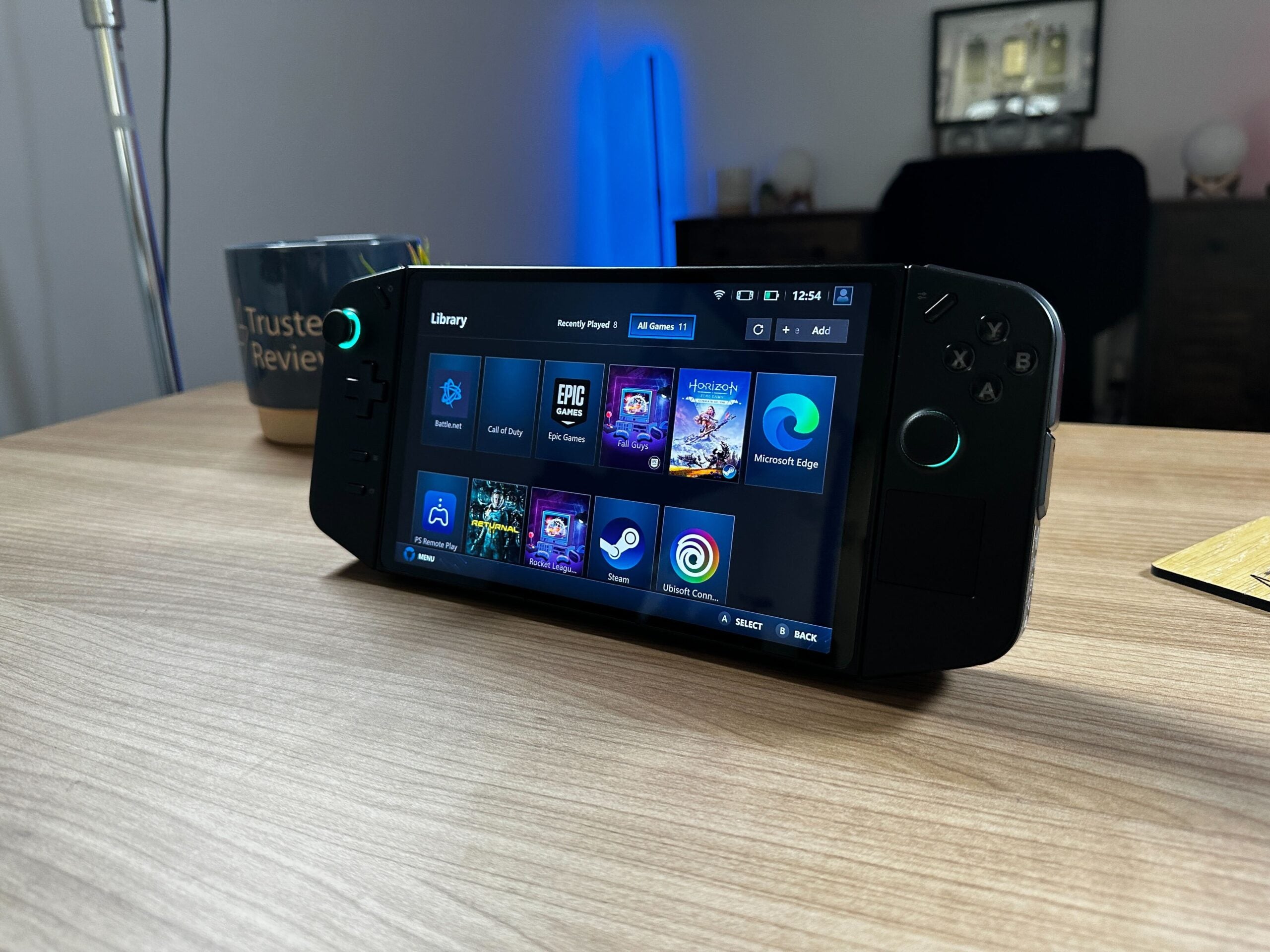

In terms of the games on offer, both devices use Windows 11 as the operating system meaning the likes of Steam, Xbox, Ubisoft Connect, Epic Games Store, Nvidia GeForce Now and more are all at your fingertips.
Battery Life
Battery life is absolutely nothing to shout about with these two handhelds, but it is largely to expected given the cramming of modern technology into these relatively small devices.


We found both devices can last around an average of 90 minutes across AAA titles, meaning these aren’t going to serve you that well on long trips. But, make for great devices to use around the home. Thankfully, both can be fully recharged in around an hour.
Final Verdict
Choosing between the Lenovo Legion Go and Asus ROG Ally is largely a matter of taste, with both AMD Ryzen Z1 Extreme models coming in at a regular starting price of £699/$699/€799. However, you can pick up a lower-powered AMD Ryzen Z1 model of the Asus ROG Ally for under £600/$600/€700.
The key points of differentiation are size and those detachable controllers of the Lenovo. If you want a more portable experience with better-feeling controls and a more seamless software experience, Asus ROG Ally wins out. But, if you want the option of sitting back and relaxing while playing games on a larger display, and would take advantage of the unique FPS controller mode, the Lenovo Legion Go is a better pick.


